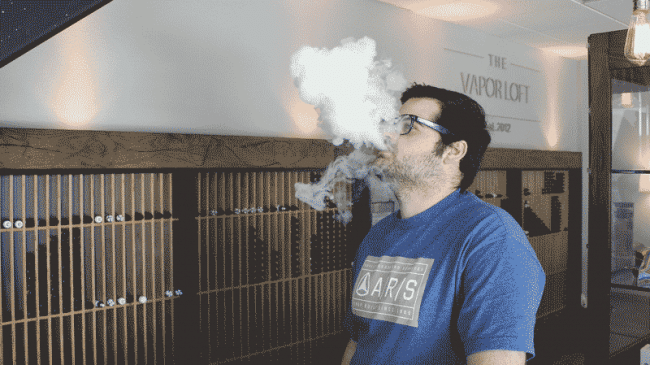While state leaders in Sacramento continue to ignore the increasing body of scientific evidence demonstrating that vapor products could be integral to reduce smoking, lung cancer and heart disease, the new head of the Food and Drug Administration, Dr. Scott Gottlieb, just threw a lifeline to California businesses — and to public health.
It’s estimated that as many as 1,000 vapor-related businesses call Southern California home. These young companies manufacture, distribute and sell products that are increasingly being used to help smokers quit traditional cigarettes.
Rodney Jerabek, for example, founded Five Pawns Signature Vapor Company in Irvine in 2012. Jerabek and his colleagues, with their combined backgrounds in marketing, medical devices, cosmetics and finance, worked to create a company that now has 26 employees and ships its premium “small batch” vapor liquids to businesses in all 50 states and 48 countries around the world.
“We were the first to bring traceability to vapor liquids with batch, lot and bottle numbers,” said Jerabek. “We’re proud to produce our products in Irvine and ship them around the U.S. and the world. We provide adults with an experience akin to enjoying fine wines or gourmet cuisine. The FDA regulations, as originally introduced, would have devastated us, our business partners and our adult consumers.”
Those FDA regulations Jerabek refers to were rules that were going to force thousands of electronic cigarette products to endure an expensive, complicated federal approval process with little demonstrated reason to expect approval. Even the FDA’s own analysis indicated that at least 99 percent of existing vaping-related products would likely disappear from the market in less than a year due to the burdensome and expensive process.
But, last month, Gottlieb extended the FDA’s application deadlines, giving vapor businesses four additional years, from 2018 to 2022, in order “to make certain that the FDA is striking an appropriate balance between regulation and encouraging development of innovative tobacco products that may be less dangerous than cigarettes.”
California businesses now have some breathing room and an opportunity to work with the FDA to achieve its stated goal of reducing smoking-related deaths. It can start by treating e-cigarettes as a promising public health alternative to smoking cigarettes. California vapor businesses, like Five Pawns, aren’t tobacco companies. In fact, they compete directly against tobacco companies for customers among the estimated 40 million U.S. smokers who have yet to make the switch to vapor products. Vapor products usually contain nicotine, but do not contain tobacco and don’t produce smoke. It’s not the nicotine, but rather the tar and carbon monoxide in cigarette smoke, that kills an estimated 480,000 American smokers every year.
Gottlieb is one of the few U.S. health officials to have clearly acknowledged this fact — that people may smoke for the nicotine, but it’s the tar and carbon monoxide in smoke that causes the lung cancer and heart disease that kills them. Rather than conflate terms like “smoking,” “tobacco” and “nicotine,” Gottlieb was clear in stating that “the overwhelming amount of death and disease attributable to tobacco is caused by addiction to cigarettes.”
If large numbers of smokers switched to vaping and electronic cigarettes, lives would be saved and overall public health would improve.
“We do think there’s a potential opportunity for e-cigarettes to be a lower-risk alternative to smokers who want to quit combustible cigarettes,” Gottlieb, a physician, recently told The New York Times.
Jerabek hopes the added time will allow businesses like his and the FDA to work together to get it right. “With the FDA acknowledging the harm reduction potential of these new technologies, it’s more important than ever for the industry to legitimize itself with manufacturing standards and responsible adult marketing,” said Jerabek.
The government’s long-running, obstinate — and false — depiction of e-cigarettes as a public health threat that should be treated the same way cigarettes are treated has been bad for public health. If Gottlieb can steer the federal government toward long-term policies focused on embracing healthier alternatives to cigarettes, it will be a huge policy and public health success.

